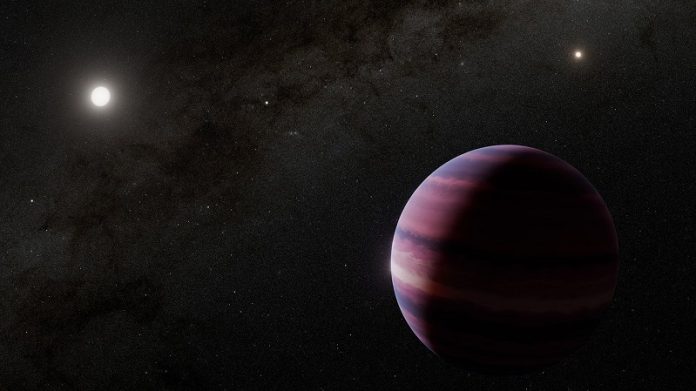
In a thrilling development, astronomers using NASA’s James Webb Space Telescope have found strong evidence for a planet orbiting Alpha Centauri A—one of the stars in the star system closest to our own.
Located just 4 light-years away, the Alpha Centauri system has always been a top target in the search for exoplanets, or planets beyond our solar system.
Alpha Centauri is a triple star system made up of Alpha Centauri A and B—two stars very similar to our sun—and a smaller, cooler red dwarf star known as Proxima Centauri.
While scientists have already confirmed three planets around Proxima Centauri, finding planets around the brighter, sun-like Alpha Centauri A and B has proven to be much more difficult.
Now, thanks to Webb’s powerful Mid-Infrared Instrument (MIRI), scientists believe they may have directly imaged a planet orbiting Alpha Centauri A.
This possible planet appears to lie within the habitable zone—the region around a star where temperatures could allow for liquid water to exist.
However, researchers say the planet is likely a gas giant, similar in size to Saturn, and therefore unlikely to support life as we know it.
If confirmed, this planet would become the closest one ever found orbiting in the habitable zone of a sun-like star.
The findings come from two new studies accepted for publication in The Astrophysical Journal Letters and co-led by Caltech graduate student Aniket Sanghi and Dr. Charles Beichman, director of the NASA Exoplanet Science Institute.
The discovery was made using a special device on the Webb telescope called a coronagraphic mask. This tool blocks out the bright light of a star so that faint nearby objects, like planets, can be seen. Imaging planets that are close to their stars is extremely challenging, but this one may be the closest ever imaged—just two times the distance between Earth and the sun.
What makes the discovery even more exciting is that the host star, Alpha Centauri A, is almost identical to our sun in both temperature and age. This is the first time a planet has potentially been directly imaged around a sun-like star so similar to our own.
Capturing this image wasn’t easy. Alpha Centauri A’s close companion, Alpha Centauri B, added even more light interference, making it harder to spot anything nearby. But the team was able to remove the glare from both stars and finally reveal a candidate planet that is more than 10,000 times fainter than its host star.
Based on its brightness and distance, the planet likely follows an elliptical orbit, which means it moves closer and farther from the star at different times. This path appears to sweep through most of the habitable zone, making it unlikely that smaller rocky planets could safely exist in the same area.
Interestingly, follow-up observations using Webb didn’t detect the planet again—possibly because it had moved too close to the star to be seen. Future observations with Webb and NASA’s upcoming Nancy Grace Roman Space Telescope, set to launch by May 2027, will help confirm whether this planet is real.
If proven, this would be a major milestone. As Sanghi notes, it would be the closest planet ever directly imaged, orbiting a star very similar to our sun, and located in our cosmic backyard.
It would also challenge our current understanding of how planets form and survive in star systems with two tightly orbiting suns.



